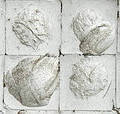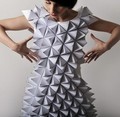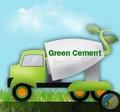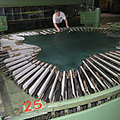Recent Materials
Coconut tiles, tiles from waste
by: Mirjam Visser, 2012-10-04 15:55:51 UTC
Ekobe coconut tiles are made from Bahia coconut endocarp (hard coconut shell) using a patented process. There is no environmental impact. The fact that the coconut shell is made of approximately 50% lignin(natural resin), gives it great resistance to decomposition …
Extra thin tiles, 50% reduction of material, carbon footprint
by: Mirjam Visser, 2012-09-28 06:50:26 UTC
Ceracasa introduces one of the most significant product innovations of recent years. The tile body is reduced to half of the thickness ( the 11 mm goes to 6 mm in the size 49.1×98.2cm), bringing big advantages through the whole process and to the end user …
3D Prieto batteries that are waterbased with more and faster loads
by: Mirjam Visser, 2012-09-04 12:31:57 UTC
Amy Prieto, Colorado State University assisting professor, re-imagines the lithium-ion battery in a 3D solid state form, with no liquid electrolyte at all. Instead,a nanowire structure forms the backbone, with the anode, cathode, and electrolyte material …
Recycled leather for walls, flooring, seats etc
by: Mirjam Visser, 2012-08-28 12:15:44 UTC
The Andeline collection exists of recycled leather veneer made from pulverized leather fibers extracted from car seat and luxurious handbag manufacturers. Leather is composed of leather fibres and mixed with natural latex and Acacia tree bark as a binding …
Moso Bamboo a carbon neutral material over its lifecycle
by: Mirjam Visser, 2012-08-21 06:30:29 UTC
Life Cycle Assessment (LCA) is the commonly accepted methodology to systematically assess the environmental impact of a product or material over the full life cycle, thus from the extraction of resources until the end phase of demolition or recycling (from …
ECO-High-pressure laminate
by: Mirjam Visser, 2012-08-08 13:18:31 UTC
The world’s first high pressure laminate free of formaldehyde and phenols.
These green-laminate boards have a formaldehyde emission of < 0.01 PPM acc. to EN DIN 717/1
Their core is made of Bagasse, fibres left over after sugar is extracted from sugarcane. …
Paper as a textile
by: Mirjam Visser, 2012-07-31 13:15:56 UTC
Paper is a cellulose non-woven and has therefor similar characteristics as cotton and viscose. Textiles made form paper can be crisp, translucent, lightweight and often make wonderful rustling sounds when worn. No wonder it is used in wedding dresses! …
Bamboo's versatility
by: Mirjam Visser, 2012-07-23 13:44:56 UTC
Bamboo is a wonder plant by all accounts. Its many uses include erosion control, watershed protection, soil remediation, and environmental greening.
Increased awareness of bamboo’s immense potential will create livelihood opportunities and contribute to …
Carbon dioxide absored by manufacturing cement
by: Mirjam Visser, 2012-06-25 20:03:08 UTC
Novacem’s carbon negative cement is based on magnesium oxide and offers the cement
industry a scalable alternative to current carbon intensive production. No carbon emissions
are released from the magnesium silicate raw material used, and overall more …
Rhubarb tanned leather
by: Mirjam Visser, 2012-05-21 15:22:14 UTC
Typical making leather is a dirty business with lot’s of water consumption and polluted waste water. Ecopell is making a leather with a smaller environmental impact. They produce in Germany and use german hides, a by-product of the meat industry to make …









